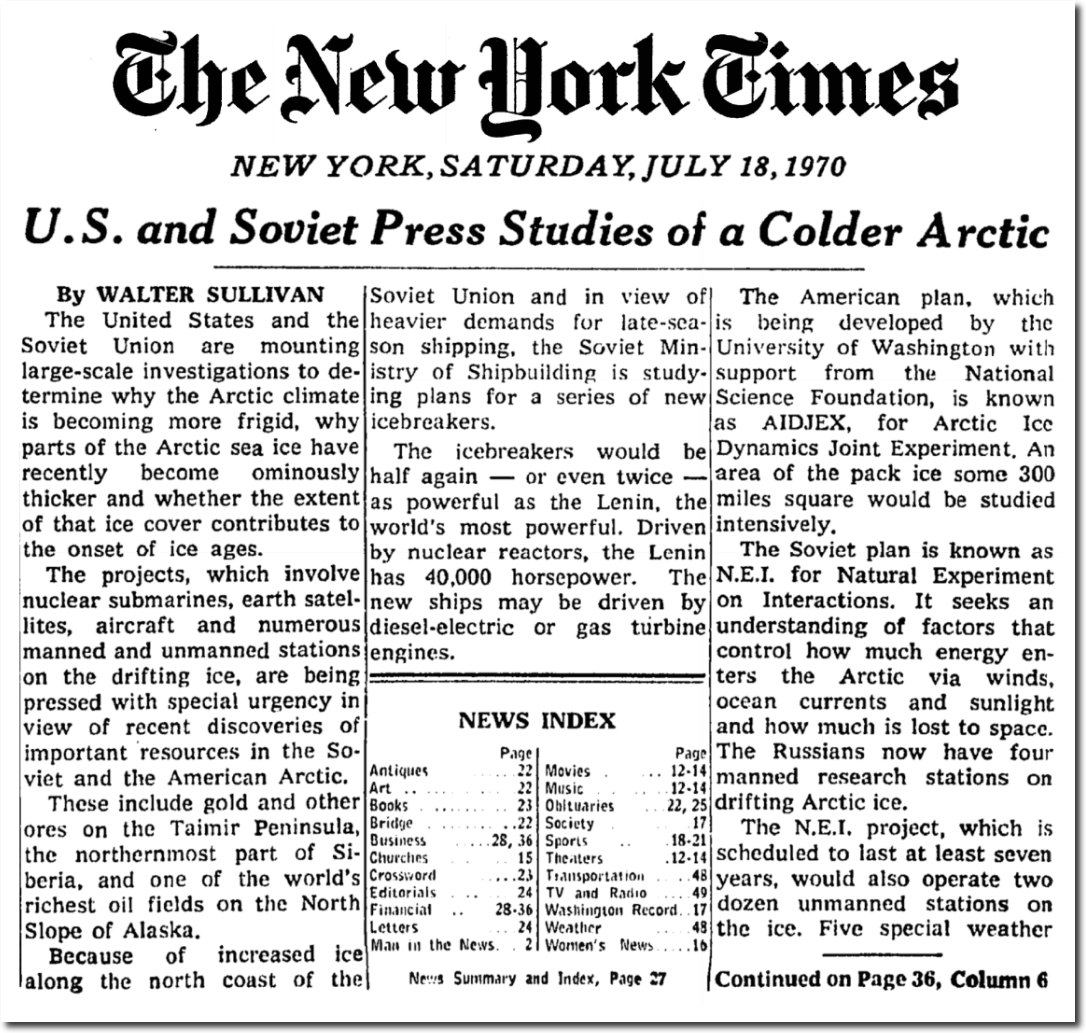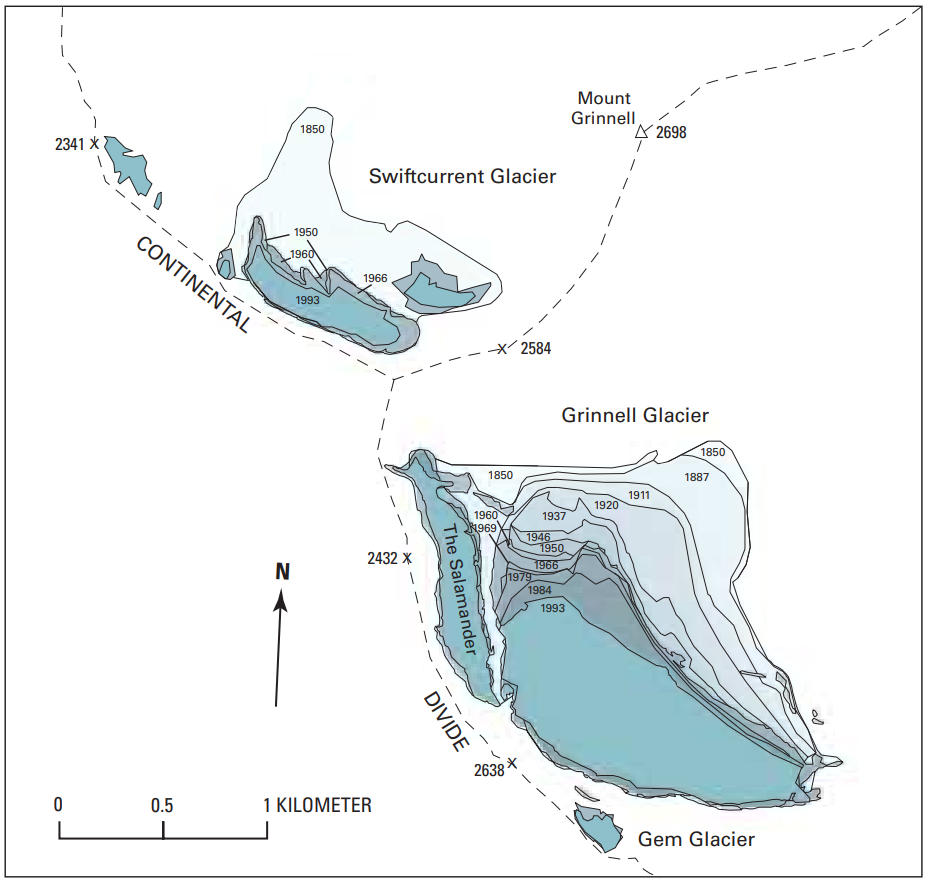Glaciers began retreating rapidly around the year 1850.
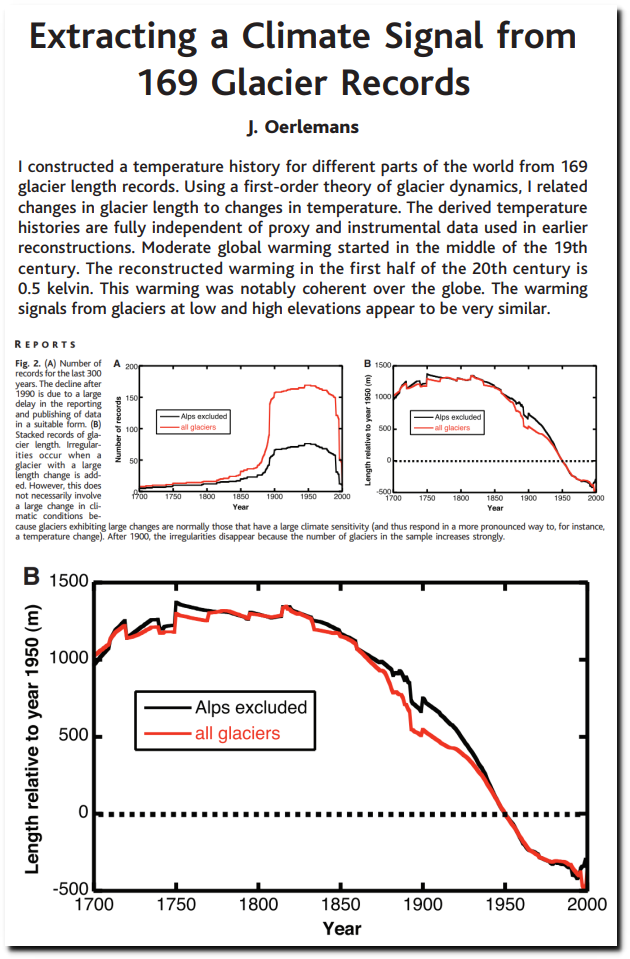
Almost all warming occurred between 1850 and 1950.
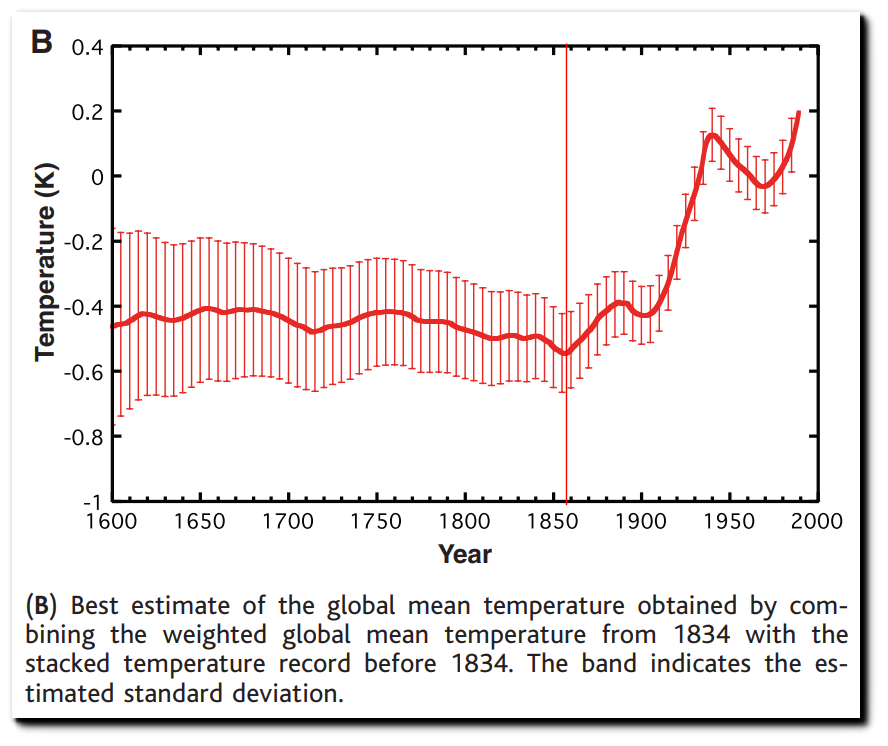
This agreed with the 1990 IPCC report.
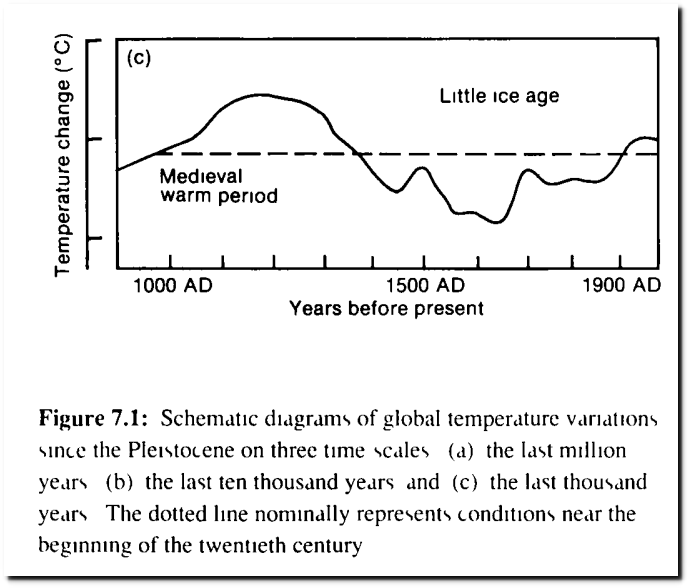
Alaska’s largest glacier began retreating around 1780.
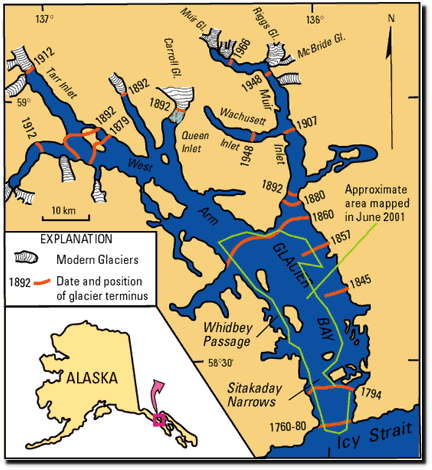
Greenland’s largest glacier retreated rapidly from 1850 to 1950, but is now growing.
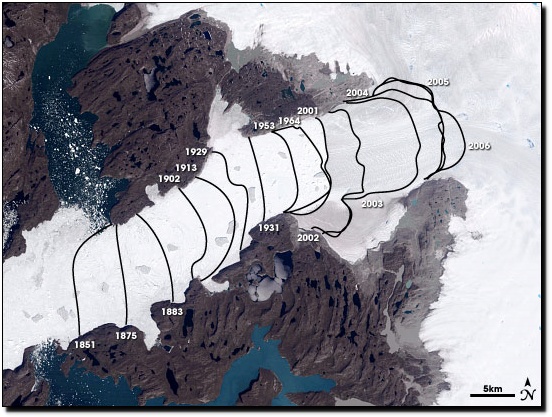
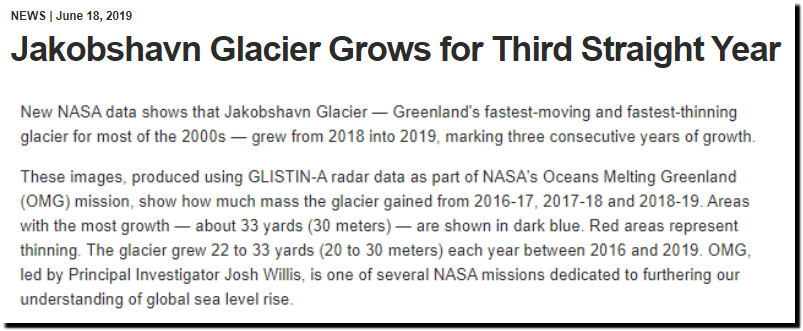
Jakobshavn Glacier Grows for Third Straight Year – Climate Change: Vital Signs of the Planet
“CEDAR RAPIDS GAZETTE, MONDAY, DECEMBER 11, 1939.
Greenland’s Glaciers Melting, Scientist Says
STOCKHOLM, Sweden (INS)—
All the glaciers in eastern Greenland are rapidly melting, declared Prof. Hans Ahlmann, Swedish geologist, in a report to the Geographical society here on his recent expedition to the Arctic sub- continent.“Everything points to the fact that the climate in that region has. been growing warmer during recent years,” the professor said.
“It may without exaggeration be said that the glaciers—like those in Norway—face the possibility of a catastrophic collapse.”
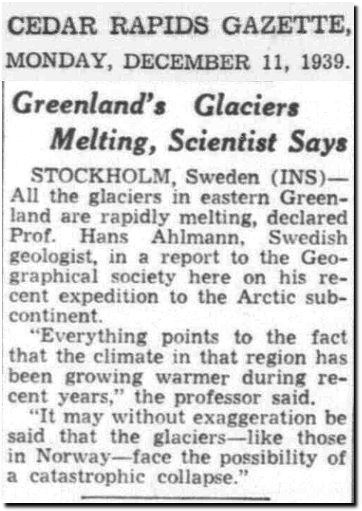
Cedar Rapids Gazette, Dec 11, 1939, p. 25
By 1970, the story had changed.
“The United States and the Soviet Union are mounting large?scale investigations to determine why the Arctic climate is becoming more frigid, why parts of the Arctic sea ice have recently become ominously thicker and whether the extent of that ice cover contributes to the onset of ice ages.”
U.S. and Soviet Press Studies of a Colder Arctic – The New York Times
Glaciers in Glacier National Park retreated rapidly from 1850 to 1950, but are now growing.
(99+) GLACIERS OF THE CONTERMINOUS UNITED STATES | Richard Menicke and Carl Key – Academia.edu
“Sperry glacier in 1900 had a surface area of 840 acres. By 1938 the area had shrunk to 390 acres, and in 1946 to about 330 acres. Even more significant is the lowering of the glacier’s surface. In 1938 Sperry glacier had a thickness of 108 feet at the site of the 1946 ice margin. At this same place in 1913 the thickness was nearly 500 feet, and the average thickness of the glacier over the area from which it has since disappeared at least 300 feet. The average thickness of Grinnell glacier in 1937 at the site of the 1946 ice front was seventy-three feet. The surface of the entire glacier was lowered fifty-six feet during that 9-year period. This means that each year the glacier was reduced in volume by an amount ‘of ice equivalent to a cube 450 feet high. Thus the volume of Grinnell glacier was reduced by about one-third from September, 1937, to September, 1946.
One Is Almost Gone.
“Several other glaciers have exhibited more — phenomenal shrinkage than Sperry or Grinnell. The topographic map of Glacier National park. prepared in 1900-1902, shows several comparatively large glaciers such as Agassiz, Blackfoot and Harrison. Their shrinkage has been so pronounced that today Agassiz has virtually disappeared and the other two are pitifully small remnants”
05 Sep 1952, 34 – The Kansas City Times at Newspapers.com
Satellite imagery shows that the Grinnell Glacier has expanded over the past thirty years.
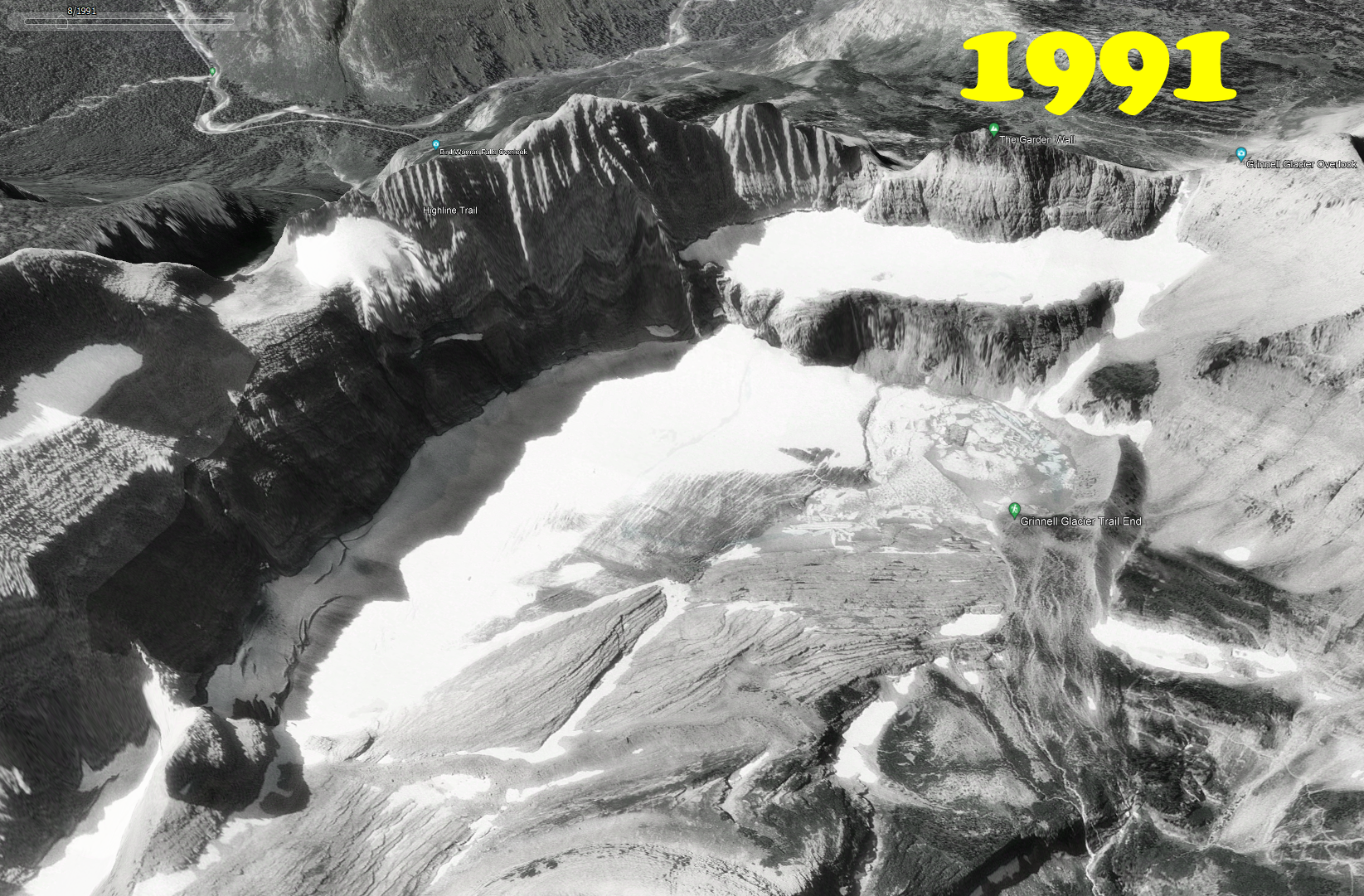
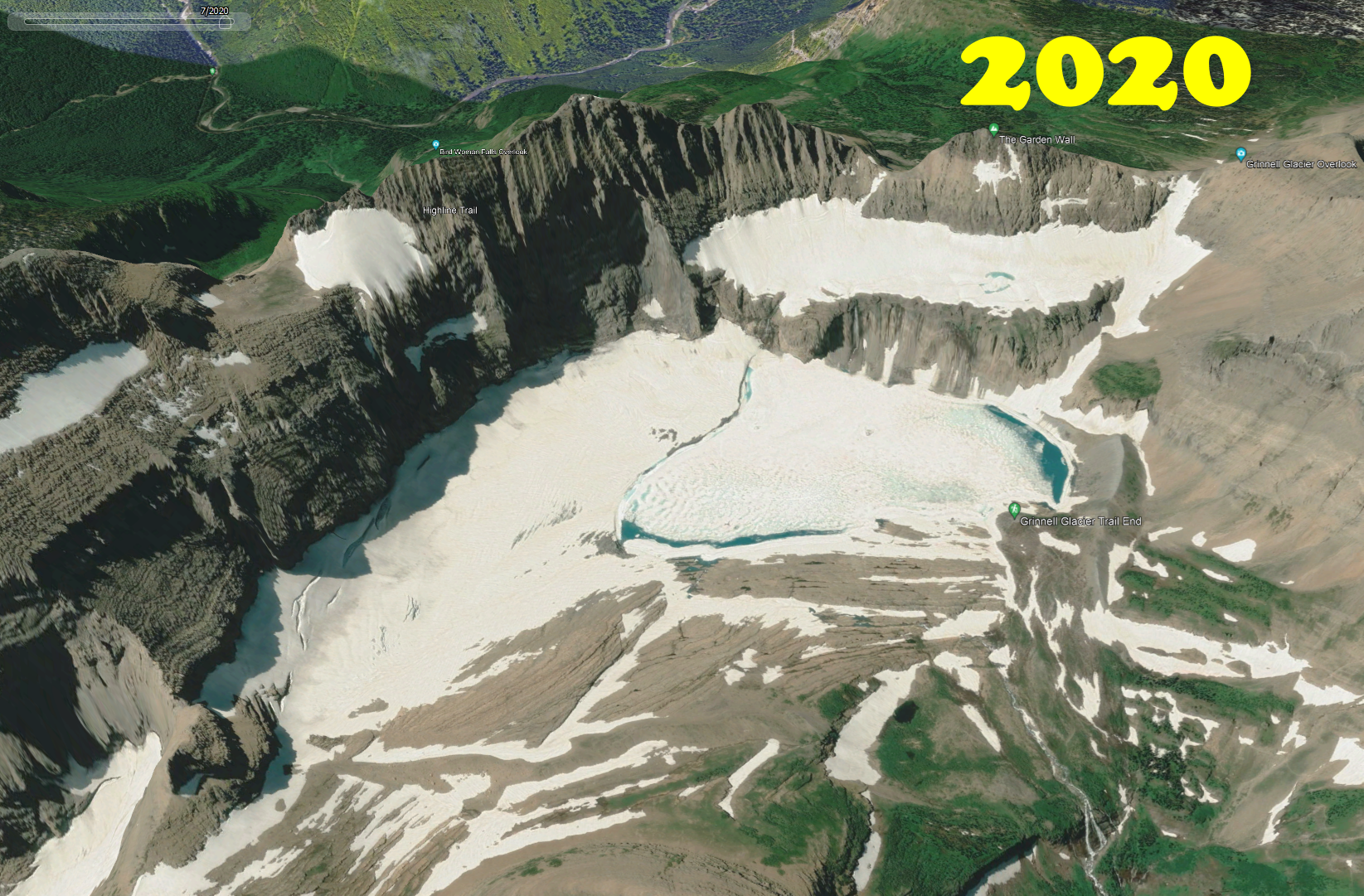
Yale University says the glaciers aren’t growing.
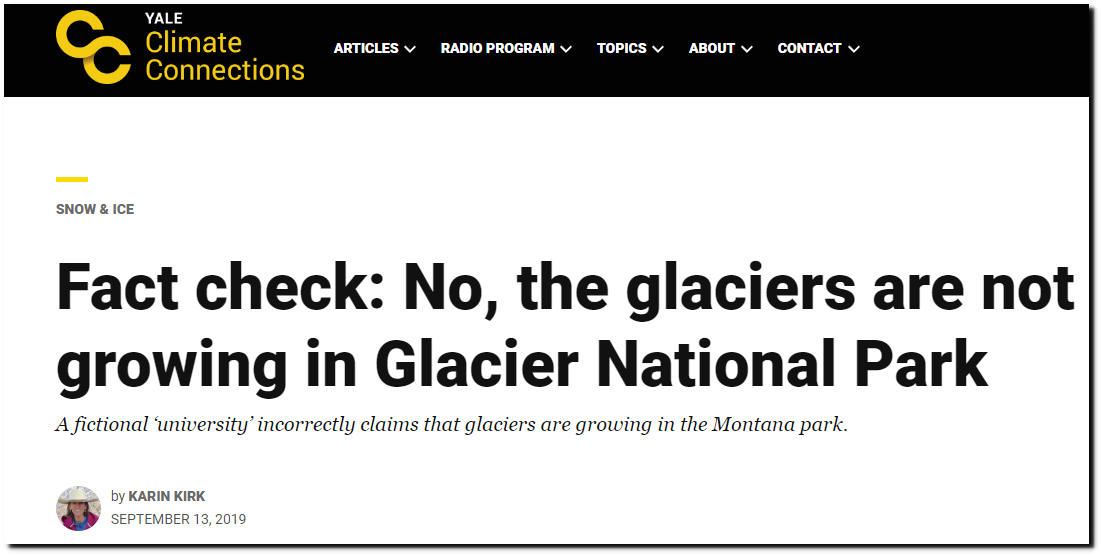
Fact check: No, the glaciers are not growing in Glacier National Park » Yale Climate Connections
According to Michael Mann and NASA, glaciers melt when earth is cold and getting colder, and they expand when earth is hot.
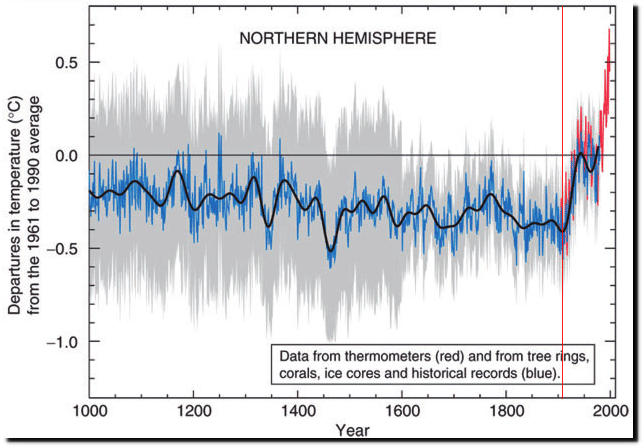
Why the hockey stick graph will always be climate science’s icon | New Scientist


